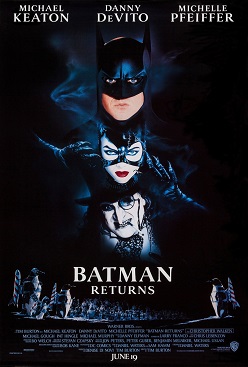Spider-Man vs. the Kingpin would be a strong seller for the Sega Genesis in 1991, but it wouldn’t be the only hit Sega/Marvel partnership produced that year. Both Jim Shooter and the man himself, Stan Lee, were adamant to celebrate the thirtieth anniversary of the Fantastic Four with something big. Admittedly, the team’s fortunes were on a slight decline with the popularity of Spider-Man and X-Men eclipsing them so they needed something big to grab the attention of both longtime fans and also bring in a new audience to the team that brought in the Marvel age.
Rumours persist that an anonymous Marvel staffer brought the Teenage Mutant Ninja Turtles arcade game to the Shooter’s attention who would then pitch the idea of a Fantastic Four beat-em-up to Sega Enterprises CEO, Hayao Nakayama. While Nakayama was skeptical of the project, he trusted Sega of America CEO Tom Kalinske (who vouched for the project) enough to greenlight it. Under the directorship of Noriyoshi Ohba [1], Fantastic Four would begin the direct collaboration of both Sega branches and Marvel.
The arcade cabinet would be a four-player one similar to Konami’s TMNT cabinets using the System 32 arcade board. Jim Lee, along with Adam and Andy Kubert, would contribute character designs as well as production artwork. As with arcade games at the time, the game’s plot was a simplified one where the team’s nemesis, Doctor Doom allied himself with the Skrulls in a bid for world conquest. Even worse, it appears that former allies like Namor the Sub-Mariner and T’Challa the Black Panther have joined in on the plot.
The game starts on streets of New York City where the Four might repel the combined forces of Latveria, Atlantis, and the Skrulls. Mister Fantastic is the jack-of-all trades with average speed and strength with elastic reach. The Invisible Woman is a glass cannon with incredible speed and power, but incredibly frail without her force fields. The Human Torch is the ranged fighter who uses his fire as projectiles, and the Thing, while slow, is the strongest fighter and extremely durable due to his rocky skin.
(Eagle-eyed fans would be able to notice a familiar shadow swinging in the background of the first level, which would be the first of many cameos in the game.)
From there the Four would travel to Atlantis and Wakanda, where they would discover that both “Namor” and “Black Panther” were, in fact, Skrull imposters. Meanwhile, Doctor Doom would drop in to impede the team’s progress by sending them to the Mole Man’s subterranean kingdom, the Negative Zone, and Attlian where Maximus the Mad has overthrown the Inhuman royal family. It all culminates in a confrontation at Castle Doom where Doom briefly sends the team back to the pirate era [2], before facing them in combat.
However, they were merely fighting a Doombot (isn’t that always the way?) and the Four must board the Skrull mothership where they must fight both Doom (again) and the Super-Skrull. Once defeated, the Super-Skrull activates the ship’ self-destruct with both him and Doom escaping capture. While the Four couldn’t apprehend Doom, the world is safe once more.
Fantastic Four earned lavish praise from critics upon its release in October 1991 for its detailed graphics and sound, which included voice samples and the iconic “kirby crackle” effect. Stan Lee himself was heavily involved with the marketing, showing enthusiasm matching the game’s (much) younger audience at his appearance at 1992’s Consumer Electronics Show to promote the Genesis and Sega CD ports.
Needless to say that Fantastic Four was an unqualified success for both Sega and Marvel. The Genesis port was only behind Sonic the Hedgehog 2 for the highest selling title of 1992, and the enhanced Sega CD version (that included cutscenes to flesh out the story) helped move units. Moreover, it helped push up the sales of the comic book, which had been slumping, and would climb higher after Jim Lee took over in 1993.
Sega would not be done as the success of Fantastic Four prompted them to greenlight their next collaborative project to challenge Street Fighter II’s arcade supremacy... Marvel Heroes: Contest of Champions. [3]
[1] Whose credits include Streets of Rage on the Sega Genesis/Mega Drive. This, however, delays the release of Streets of Rage 2 to 1993.
[2] A nod to Doom’s first appearance in Fantastic Four #5.
[3] Replacing OTL's Eternal Champions.
